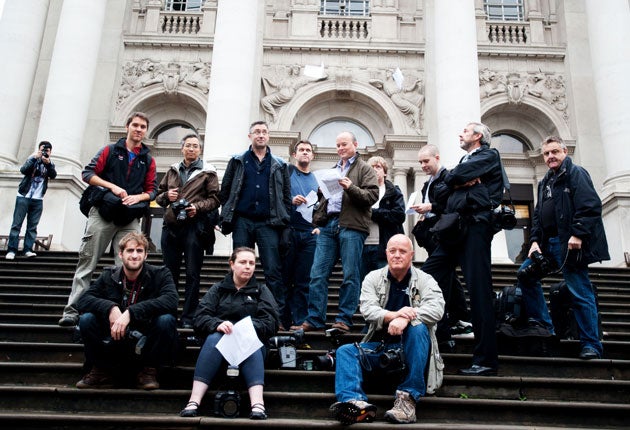Turner Prize is far from picture perfect

You can almost guarantee The Turner Prize to cause a rumpus for one reason or another but this year's row was an unusual spat between the photographers who'd arrived to cover the exhibition's launch and Tate Britain.
The gallery handed photographers a contract which included a sub-clause which warned them not to broadcast or publish any filming, photographs or text that would "result in any adverse publicity for the Tate". The contracts got torn up and the photographers were left cooling their heels outside.
Eventually, the Tate backed down and opened its doors. In the meantime, print journalists were given a tour of the exhibition, which opens to the public today. The verdict? Neither especially good nor especially bad, but moderately mediocre.
The Turner never succeeds in ravishing us visually. It doesn't make us weep in despair either. Things could be worse, but can this really be the best art made in Britain by a man or woman under 50 has to offer?
Four artists are competing for the £25,000 top prize. Susan Philipsz's Lowlands fills an entire empty gallery – well, it's empty apart from three black speakers, which project slightly different recordings of her singing a melancholy 16th-century folksong, a cappella about a lost love who returns from the grave to haunt his beloved. It's wistful, touching, engaging in its sweet, untutored rawness but might be a touch more engaging if you could hear the lyrics.
Dexter Dalwood is the only painter in the show. He makes what look like flatly, thinly painted, scaled-up collages in oils, mixing and matching his influences – sometimes bits of cubist paintings turn up. You could call him a history painter de nos jours. The titles of the works tend to talk up their significance – The Death of David Kelly comments upon a man who found himself embroiled in the deadly game of politics. Is this painting really an imaginative embodiment of the Kelly tragedy? These paintings seem to be making claims for themselves that the works themselves don't quite justify.
The Otolith Group is a collective practice. Books sit on tables, waiting to be read. TV screens present a 13-part television series about the heritage of Hellenism made by the French film-maker Chris Marker. On the big screen a film called Otolith III takes an unreleased film project by Satyajit Ray, and partially realises it through an ever-shifting sequence of archival images. At times it becomes a visually ravishing dream world. As an enterprise, it also feels monstrously pretentious.
Like the Otolith group, the Spanish sculptor Angela de la Cruz is in the business of interrogating her own practice as an artist. She makes paintings of a relatively minimal kind, and then she does violence to them.
But as with so much in this show, there is too much premeditation here. These artists have forgotten that art can also thrive by letting go.
Subscribe to Independent Premium to bookmark this article
Want to bookmark your favourite articles and stories to read or reference later? Start your Independent Premium subscription today.

Join our commenting forum
Join thought-provoking conversations, follow other Independent readers and see their replies